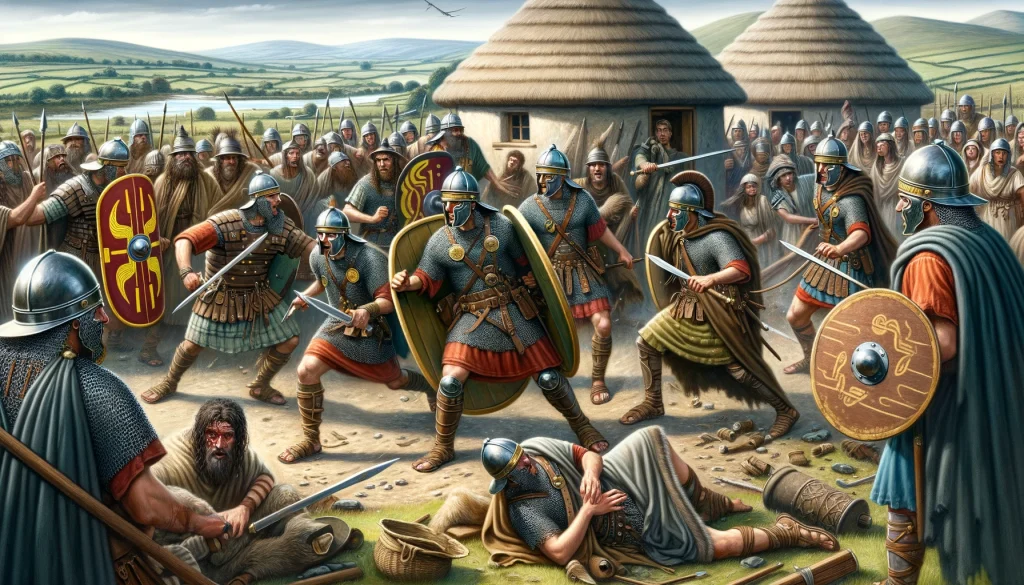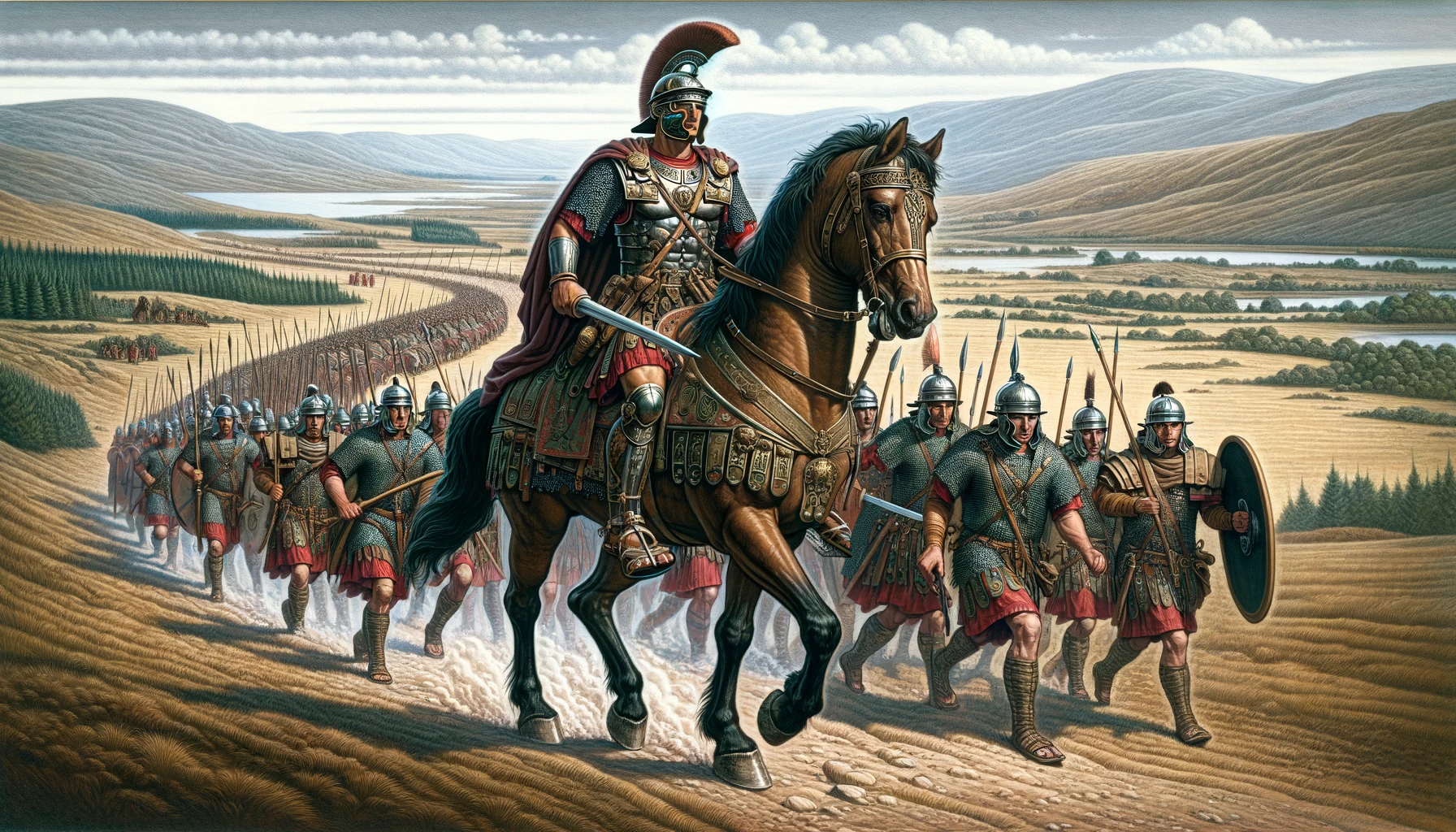As spring 79 neared, Agricola and his legion-commanders finalized their plans for a major northern campaign. Tacitus recounts that with the arrival of summer and the assembly of the army, Agricola actively oversaw the march, praising disciplined troops and correcting those who fell out of line. He personally chose locations for camps and scouted areas like estuaries and forests prone to ambushes.
[S]ummer came, assembling his forces, he continually showed himself in the ranks, praised good discipline, and kept the stragglers in order. He would himself choose the position of the camp, himself explore the estuaries and forests. Meanwhile he would allow the enemy no rest, laying waste his territory with sudden incursions, and, having sufficiently alarmed him, would then by forbearance display the allurements of peace. In consequence, numerous tribes, which up to that time had been independent, gave hostages, and laid aside their animosities; garrisons and forts were established among them with a skill and diligence with which no newly-acquired part of Britain had before been treated.
Cornelius Tacitus: Agricola XX
The ‘numerous tribes’ referred to by Tacitus, residing in an area characterized by estuaries and forests, were likely located among the Selgovae and Votadini. These groups probably engaged in a similar type of client relationship with Rome as that previously established between Cartimandua and the Brigantes.

Meanwhile, his swift-moving units kept the enemy under constant pressure, following which he would offer them forgiveness for their resistance and present the benefits of peace. Consequently, many tribes that had previously engaged with the empire as equals now offered hostages, ceased hostilities, and accepted Roman forts. This expansion into new British territories was achieved with remarkably minimal conflict.
Cornelius Tacitus: Agricola XX
Tacitus asserts that these communities were so thoroughly encircled by garrisons and forts that no new region in Britain had ever been pacified so smoothly (Agr. 20.3). It is known that Quintus Petillius Cerialis established a permanent fort at Carlisle (Luguvalium), although archaeology often does not provide such precise foundation dates. Other forts in northern England are generally attributed to the Flavian era based on pottery and coin findings, although these dates are approximate.
It seems improbable that the Carlisle garrison remained isolated in the far north for an extended period. Agricola’s second campaign likely involved creating a network of forts extending to the legionary fortresses at Chester (Deva) and York (Eburacum), strategically sustainable from a logistical standpoint. Indeed, both principal northern routes, flanking the Cheviots, feature a series of forts at intervals of approximately 50km (30 miles) to safeguard rear communications. Many of these were probably in use during this time. Far from being a period of minimal advancement, obscured by common themes, it appears that Agricola was methodically establishing the groundwork for an eventual invasion of Caledonia.
Traces of this campaign can be found in slighted ramparts of the native strongholds on Ingleborough Hillfort and Carrock Fell Hillfort, if indeed these particular hill-forts had not previously to Cerialis.
Agricola probably led the western column, giving the place of honour to his old legion Legio XX Valeria Victrix. The tactics were terrorising raids followed by offers of reasonable terms. This way he won over many people who had till then maintained their independence.
Meanwhile, the Legio IX Hispana likely progressed parallel to Agricola on the east side of the Pennines, utilizing Cerialis’ road to Catterick (Cataractonium) and establishing a new fort at Corbridge (Coriosopitum) to secure the Tyne crossing. The Legio II Augusta probably stayed in the south to oversee the recently subdued Silures; the Legio II Adiutrix from Chester (Deva) and the Legio XX Valeria Victrix, Agricola’s former division, likely joined him.
There were occasional contacts with the eastern column. Agricola’s construction of the Stanegate, south of what would later be Hadrian’s Wall, and the presence of the Ninth Legion’s tile in Carlisle (Luguvalium), indicate cross-regional movements, though at times, the commander of the Ninth Legion had to operate independently.
